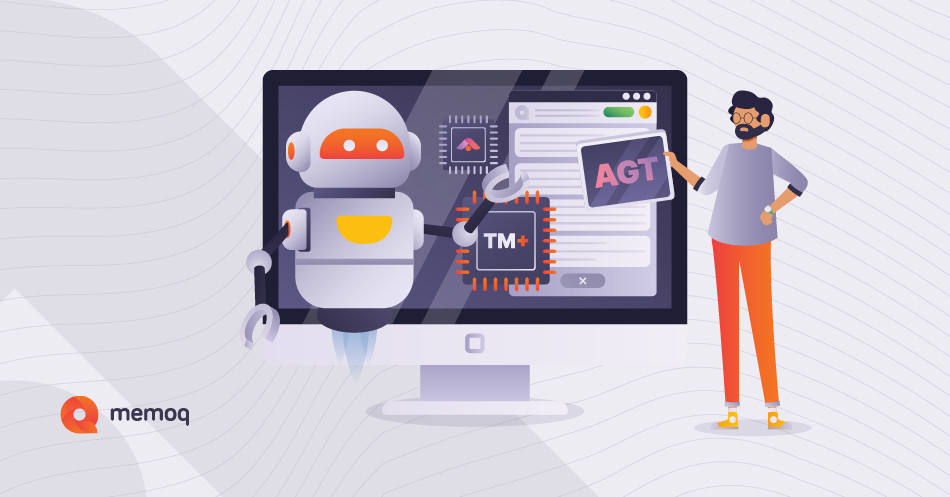memoQ AGT, the long-awaited translation automation technology from memoQ, is now available with the release of memoQ 10.4. In this blog post, we are taking a closer look at this new technology and the benefits it brings to our users.
Leveraging AI’s Full Potential
memoQ AGT is an AI-driven translation automation technology that combines the advantages of machine translation and translation memories. It uses a large language model (LLM) to generate translations and provides immediate domain customization, ensuring that the translated content aligns with the client's current language assets such as translation memories, terminology, term bases, and aligned documents. It does so without the need to train or fine-tune the LLM to the resources, resulting in context and domain-adapted translations and significant cost savings.
memoQ Technologies that Led to AGT
AI in translation, whether it is NMT or LLM, needs thoroughly curated high-quality data to work efficiently and provide translations that require little or no post-editing. Ensuring the high quality and the hygiene of language data has always been a priority to memoQ. This is reflected by the fact that memoQ is the only TMS that combines a high-performance translation memory (TM+) and a corpus memory known as LiveDocs.
LiveDocs is the only integrated alignment technology on the market that is suitable for fast-paced localization workflows. It enables document alignment in various formats and utilizes alignment results without the need to review unused alignments, thereby reducing the alignment process by several days compared to conventional alignment tools.
memoQ’s TM+ is the most robust translation memory engine in existence. It offers all major TM features, can handle translation memories with more than 10 million segments, and scales well with a higher number of CPU cores. Its TMX import performance is significantly faster than the classic TM engines, and it is less sensitive to anti-virus program activity. TM+ is also more stable than the classic TM, as its architecture prevents corruption by design.
memoQ's linguistic data management capabilities ultimately paved the way for the development of memoQ AGT.
memoQ AGT Goes Beyond Machine Translation
memoQ AGT relies on user-provided data (including TMs, LiveDocs, and terminology) and works without the need for training or adjusting an AI model (NMT or LLM), eliminating the need to transmit substantial data to an external source.
With memoQ AGT, users can immediately utilize their existing language resources to run the AI without needing any preparatory actions or altering their usual workflow. The translation output from memoQ AGT is tailored to the user’s resources, even if there is only terminology available, and adapted to the specific domain and context of the text. Even with the potential expenses (given the costliness of generative AI, even in open-source models), memoQ AGT significantly minimizes the threshold for entry into AI usage, virtually reducing it to practically zero.
The Significance of Language Resources
memoQ AGT works best for language service providers handling projects with substantial background resources including TMs, terminology, or parallel texts as AGT is fully capable of optimizing the leverage of these resources. If a translator comes across a fuzzy match in a translation memory, it can be tedious to adjust the pre-translated content to fit the current source text, even if the translation in the match is perfect. memoQ AGT excels in this exact scenario.
memoQ AGT can also make effective use of so-called low fuzzies. Normally, a human translator would not address a fuzzy match below 80%. However, AGT can work with matches at rates of 50% or 60%, adapting them to the source text. In this manner, AGT automates a laborious and repetitive human task, which might involve cognitive effort but lacks creativity.
The Human Translator Stays in the Center
In essence, memoQ AGT provides optimum automation in premium translation. It simply makes a human task significantly more efficient although it does not create a computational process that would replace a human in any role. Despite its effectiveness in delivering outstanding translations, any translation output from memoQ AGT needs to be checked and approved by a human linguist.






